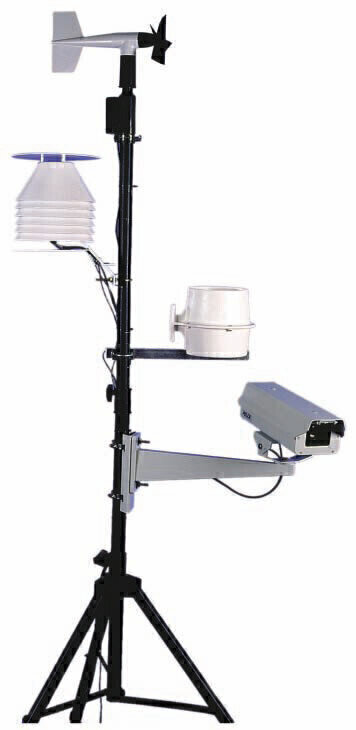Environmental Laboratory
Network of Weather Monitoring Stations Benefits Agri-Businesses
Feb 19 2009
Many of the traditional sources of weather information are not sufficient for agricultural applications because weather observations sites are not close enough or timely enough to
represent the local environment. Additionally, most systems are designed to deliver information on an hourly basis at best, where as many decisions in agriculture are based on minute- byminute weather conditions. Localised, real-time environmental information is vital for day-to-day agronomic management of all crops.
To help the agri-business community, a new network of weather monitoring stations is sprouting up in Canada. The project was initially launched in summer 2007 and was spearheaded by the Canadian Wheat Board, Pioneer Grain and WeatherBug, a leader in live, local weather information and services. The project’s original goal was to deploy a network of 1,000
weather stations across the Prairies over the first three years of the program. Due to overwhelming demand, however, more than 900 weather stations have been installed within the first year on farms, grain terminals and agricultural retailers.
The weather stations are mounted on poles and record wind speed and direction, humidity, precipitation, temperature, barometric pressure, dew point readings and more. Data is wirelessly
transmitted to a hand-held device or cell phone and are updated every few seconds. One of the goals of the program is to use information collected from the weather stations for more
efficient use of equipment and products. As an example, the weather stations assess wind conditions to reduce spray drift, or indicate temperature, humidity and rainfall conditions to help predict harvest quality. This past summer, there were enough stations deployed to create models to forecast certain disease and insects. Reaping direct benefits for growers and retailers, the weather network in Canada is now being used as a model for other countries looking to increase yields and grades while also saving money and time.
Digital Edition
AET 28.2 April/May 2024
May 2024
Business News - Teledyne Marine expands with the acquisition of Valeport - Signal partners with gas analysis experts in Korea Air Monitoring - Continuous Fine Particulate Emission Monitor...
View all digital editions
Events
Jul 30 2024 Jakarta, Indonesia
China Energy Summit & Exhibition
Jul 31 2024 Beijing, China
2024 Beijing International Coal & Mining Exhibition
Aug 07 2024 Beijing, China
IWA World Water Congress & Exhibition
Aug 11 2024 Toronto, Canada
Aug 25 2024 Stockholm, Sweden and online









.jpg)








